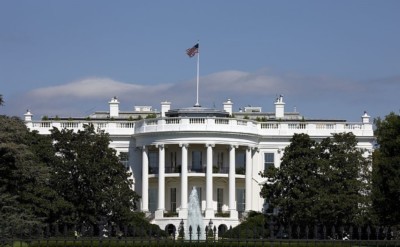6 tips to balance your work, family time
Climbing the career ladder as a bachelor or bachelorette is challenging enough, but having a partner or loved ones at home can add a significant level of complexity and even some guilt. There are a few ways to help manage the constant balance.
Drop Multitasking
It may be tempting to get on a work call while you are playing with your kid or out with your spouse, but the act makes you less present for your family and your client. Instead, whenever possible, choose which one you want to focus on at that moment.
Only Make Commitments You Can Keep
Stay honest in what you are capable of, as family needs sometimes will trump work needs, and vice versa. Frank conversations are easier than broken promises, particularly if you respect that both your family and your work are of equal importance and that which takes precedence depends not just on your values, but on the circumstances of the moment.
Build in Work into Vacations
It is counterintuitive, but consider setting aside an hour or so during family days or vacations to get work done. The thoughtful act puts you on the offensive (choosing your time) rather than the defensive (worrying about getting away), raises your chances of actually being productive and allows you to get the work out of the way so you can be completely focused on your loved ones later.
Know Your Family Absolutes
Most loved ones or families have absolute priorities, like always eating dinner together or always attending a partner’s event. Discussing and establishing the non-negotiables allows you to know the boundaries and creates a level of flexibility around the less important activities.
Separate Temporary From Permanent
A month of late nights and early mornings is different than a five-year career-only focus. Honestly look at the pattern of your work at the moment, assess where things are headed and avoid panicking over what could be a short-term imbalance.
Explain Your Work to Loved Ones
It can be easier to keep work at work, but try sharing some details of your current career track with your family. Even the youngest members or the least experienced loved ones may give empathy and perhaps will show more flexibility in their own needs after they better understand why you are struggling with balancing everything in your life.
You can read the original article here.
Source:
Brown D. (25 September 2017). "6 tips to balance your work, family time" [Web blog post]. Retrieved from address https://workwell.unum.com/2017/09/6-tips-balance-work-family-time/
It’s the most stressful time of the year: 5 tips to get your employees through the holidays
It’s that time of year again. Employees are preoccupied with thoughts of holiday shopping, party planning and visiting relatives, and the stress of it all can seriously impact their work. So what can you do to help?
While stress is a year-round issue, there are more obvious triggers for it around the holidays. Mark Malis, the head of global human resources at LifeWorks, assembled a list of five common causes of stressduring this time of year, and what you can do to tackle them.
1. Heavier workloads
Employees taking more days off means less time to get things done. It’s hard not to feel overwhelmed with work and holiday deadlines coming up fast.
The fix: Help your employees relax a little by making them feel valued. Let them know their hard work isn’t going unnoticed. You can even encourage employees to identify which colleagues are going the extra mile, and reward them with gifts.
2. Unhealthy eating
Plenty of sugary food options are always floating around during the holidays. All of the cookies and eggnog can really make your employees feel sluggish.
Encourage your employees to make better choices by hosting a healthy potluck. You can even turn this initiative into a weight loss competition to keep the good food choices going.
3. Finances
With the average American shopper expecting to spend almost $1,000 this holiday season, it’s no wonder money is on everyone’s mind.
Financial wellness workshops or budget planning seminars could really help your employees come up with a realistic budget and control their holiday spending. The less they’re worrying about money, the more employees will be able to focus on their work.
4. Depression
The holidays aren’t a joyful time for everyone. Some employees could be struggling with sad memories that resurface around this time of year.
When it comes to mental health, openness is always a good way to go. Encourage employees to discuss these feelings with each other in a supportive group setting. This can allow employees to help each other find solutions and make anxious workers feel less alone.
5. Illnesses
With the holiday season comes cold and flu season, too. Getting sick when you have a million things to get done can be disastrous.
It’s important to remind your employees about good hygiene practices. Make it clear that anyone who’s sick needs to stay home; the last thing you need is half the office out with the flu. Distributing handbooks or posters with tips to stay healthy can be a big help, too.
You can read the original article here.
Source:
Mucha R. (16 November 2017). "It’s the most stressful time of the year: 5 tips to get your employees through the holidays" [Web blog post]. Retrieved from address https://www.hrmorning.com/its-the-most-stressful-time-of-the-year-5-tips-to-get-your-employees-through-the-holidays/
5 ways digital tools can help build a better benefits package
"...digital tools can be excellent motivators and are a popular option for keeping employees to their wellness objectives..." In this article from Employee Benefit Advisor, we get a fantastic look at some statistics and digital tools to create better employee engagement.
The American workforce has an employee engagement problem: Half of U.S. workers are disengaged, according to a recent Gallup poll. That not only has a detrimental effect on individual wellness, but on company culture and the bottom line. According to The Engagement Institute, disengaged employees cost organizations between $450 and $550 billion every year. In addition to being less productive, they’re also more likely to quit.
One of the most effective ways to improve employee engagement is to offer better benefits. In fact, research conducted by Willis Towers Watson found 75% of employees said they were more likely to stay with their employer because of their benefit program. This demonstrates the value of designing an employee benefits package that really works for your staff. And to even better engage workers with benefits, employers should utilize HR apps and employee wellness software.

They vary in functionality, device compatibility, and of course price, but they all share five considerable advantages:
They’re highly adaptable. Unlike programs that rely on in-person use or resources that are primarily stored in binders, digital content can be updated on the fly. This flexibility makes it very easy to keep the information current and relevant, and it even opens the door to personalized benefits. For instance, if each employee has their own login, they can bookmark the resources they find most useful and receive suggestions based on those picks. Seventy-two percent of employees in a MetLife survey say being able to customize their benefits would increase their loyalty to their current employer, which makes this perk doubly advantageous.
They’re fully integrative. One major complaint employees have is that their health information is so disjointed. Dental, physical, psychological and nutritional data is siloed, creating a cumbersome situation for employees when it comes to accessing and updating their records. Digital tools neatly solve this problem by collecting all these resources in one place. All employees have to do is sign into one account to view all their health-related resources, benefits, emergency phone numbers, enrolment information, health savings account balance and so on.
They’re constantly accessible. Have you noticed your staff using fewer and fewer benefits over time? It’s easy to assume they’ve lost interest, but chances are they’ve simply forgotten what’s available to them. Digital tools are a fantastic way of combating that attrition for a couple of reasons. First, they’re super easy to access because they can be used essentially anytime, anywhere. The second reason your staff is more likely to continue using their benefits with a digital platform is because it can serve them with notifications and reminders. They no longer have the excuse of being unaware when fresh content is added, or missing medical appointments.
They encourage employee goals. To add to the previous point, digital tools can be excellent motivators and are a popular option for keeping employees to their wellness objectives. Two of the most common goals are weight loss and smoking cessation, but your employees can use calendar, reminders, notes, fitness trackers and other features to push them toward any goal they like.
They’re easily scalable. Finally, digital tools are the most efficient way of reaching a large employee base, especially if they’re spread over a large geographical distance. It’s impossible to expect a thousand employees located in different states to attend a stress management seminar, for example, but it’s not unreasonable to ask them to watch a five minute video or listen to a podcast. Digital resources are changing the game when it comes to reaching all employees equally so that no one gets left behind.
Some things to keep in mind
Now that you’ve been convinced to digitize your employee wellness program, there are a couple of assurances you should make. The first is confidentiality. Your employees need to feel safe accessing your health resources, so guaranteeing the security and privacy of their information is a must. You should also make accommodations for various accessibility concerns. In other words, having all your resources in video format isn’t helpful for employees who are visually impaired. Also be aware of the different situations in which your staff might need access (at home, on the go, with or without an internet connection, etc) to ensure maximum ease of use.
Why is this all so important? As cool and cutting-edge as many of these digital tools are, at the end of the day your goal is to promote employee well-being and engagement. Anything that encourages your staff to come into work with a smile on their faces is worthwhile. Gallup studies have shown highly engaged organizations are 21% more profitable, 17% more productive, and achieve a 41% reduction in absenteeism. No matter how effective your current benefits package is, you can — and should — take it to the next level with a digital program.
Read the original article.
Source:
Mittag A. (17 November 2017). "5 ways digital tools can help build a better benefits package" [Web blog post]. Retrieved from address https://www.employeebenefitadviser.com/opinion/5-ways-digital-tools-can-help-build-a-better-benefits-package?feed=00000152-1387-d1cc-a5fa-7fffaf8f0000
SaveSave
SaveSave
SaveSave
4 tips for workplace gift giving
The holidays should be a time of bliss and celebration. However, this often isn’t the case when the stress of deciding if coworkers will make it on your holiday shopping list sets in.
So, as you make that list, check it twice, and consider these key points before you find yourself in an uncomfortable workplace gift exchange.
The company gift-giving policy
Almost every large company has one, and it isn’t just excluded to company clients and outside business partners. It also applies to gifts given between employees. While many companies allow for gifts to be given below a certain dollar amount, make sure to look for this policy or contact Human Resources before purchasing any gifts or organizing a gift-exchange.
Reasons for giving
While all gifts should be exchanged in the spirit of the holidays, some people may have ulterior motives. If you have recently begun negotiations for a raise or promotion, you will want to steer clear of buying your manager anything that seems to be trying to influence their decision. Typically, the flow of gifts should always be downward, not upward within a company.
Office culture
This is especially important if you are new to the company. Did people start talking about the annual gift exchange before Thanksgiving? Or have you already received an invite to the holiday team lunch?
Among a survey of U.S. workers, 45 percent say they give their office peers a gift during the holiday season, and 56 percent spend more than $20 doing so.
It’s important to use your best judgment to determine the office norm and if you need to, ask a co-worker to confirm your suspicions.
Be inclusive
If your company does allow for gifts to be exchanged, make sure everyone on the team is included. A great way to do this is by offering an opt-in vs opt-out gift exchange. This way everyone is invited, but not everyone has to choose to participate. This is mindful of employees who may be experiencing a financial hardship that won’t allow for unnecessary purchases this holiday season.
With all things considered, remember that gift giving at work is a company specific characteristic and the best place to look to find answers to your questions may be internal. Who knows, the coworker sitting three cubicles down playing Christmas music in October and the coworker next to him whose personality closely resembles the Grinch, may actually be in agreement on a policy like this one.
You can read the original article here.
Source:
Taylor K. (20 November 2017). "4 tips for workplace gift giving" [Web blog post]. Retrieved from address https://workwell.unum.com/2017/11/4-tips-for-workplace-gift-giving/
CenterStage: Help Us Fill The Truck!

For this month’s CenterStage, we’ve decided to do something a little different. Due to the holiday season being in full-swing, we wanted to spread the love and joy that fills our hearts this time of year by sharing with you our involvement with Fill the Truck as a sponsor.
"One of the best parts of Fill the Truck is being there to deliver the donated goods to our awesome charities. The expressions on their faces and their gratitude, makes all of the hard work and extra efforts worth every second."
-Kelly Ackerman, Sales Operations Director at Frames USA
Our Part & Yours
Saxon invites our local community to come together in donating things like personal care items, toilet paper, winter clothing and bedding to fill up boxes. These items allow us a chance to give back directly to our local community. Then, we load the boxes up onto the truck, overjoyed with the sensation of giving back to those in need.
The truck delivers to all charities involved – such as The Healing Center, who offers practical, social and spiritual support to individuals and families, and the Children’s Home of Northern Kentucky, who focuses on providing a better life for abused, neglected and at-risk children – around the 21st of December, and every donated dollar goes toward buying needed items with no administrative costs.
A Brief Fill the Truck History Lesson
Fill the Truck began when the CEO of Frame USA, Dan Regenold, envisioned filling a 54-foot semi-truck full of supplies for a local charity. His idea flourished into a full-blown charitable operation, including a team of packers, donation collectors, marketing & PR professionals and more.
This year, the 2017 vision is to fill multiple trucks and provide substantial donations to each charity, partnering with several businesses and corporate partners, including Saxon.
You can read the full Fill the Truck history here.
Donate Today
Are you ready to take action and join Saxon for this charitable Community Strong event? Donations can be dropped off directly to Saxon’s local office or any one of the participating locations. Unsure of what to donate? Monetary donations are accepted and will be used to purchase items to help finish Filling the Truck. Happy holidays from Saxon and we look forward to “Filling the Truck”!
Download the PDF
Pressure Builds To Cut Medicare Patients In On Prescription Deals
In this article from Kaiser Health News, the stupendous rise of prescription costs is finally addressed. What steps are being taken to reduce costs for Medicare patients? Find out below.
Medicare enrollees, who have watched their out-of-pocket spending on prescription drugs climb in recent years, might be in for a break.
Federal officials are exploring how beneficiaries could get a share of certain behind-the-scenes fees and discounts negotiated by insurers and pharmacy benefit managers, or PBMs, who together administer Medicare’s Part D drug program. Supporters say this could help enrollees by reducing the price tag of their prescription drugs and slow their approach to the coverage gap in the Part D program.
The Centers for Medicare & Medicaid Services (CMS) could disclose the fees to the public and apply them to what enrollees pay for their drugs. However, there’s no guarantee that such an approach would be included in a proposed rule change that could land any day, according to several experts familiar with the discussions.
“It’s obvious something has to be done about this. This is causing higher drug prices for patients and taxpayers,” Rep. Earl “Buddy” Carter (R-Ga.), a pharmacist, said this week.
While Medicare itself cannot negotiate drug prices, the health insurers and PBMs have long been able to negotiate with manufacturers who are willing to pay rebates and other discounts so their products win a good spot on a health plan’s list of approved drugs.
Federal officials described these fees in a January fact sheet as direct and indirect remuneration, or DIR fees.
In recent years, pharmacies and specialty pharmacies have also begun paying fees to PBMs. These fees, which are different than the rebates and discounts offered by manufacturers, can be controversial, in part, because they are retroactive or “clawed back” from the pharmacies.
The controversy is also part of the reason advocates, such as pharmacy organizations, have lobbied for this kind of policy change.
PBMs have long contended that they help contain costs and are improving drug availability rather than driving up prices.
Pressure has been building for the administration to take action. Earlier this year, the federal agency’s fact sheet set the stage for change, describing how the fees kept Medicare Part D monthly premiums lower but translated to higher out-of-pocket spending by enrollees and increased costs to the program overall.
In early October, Carter led a group of more than 50 House members in a letter urging Medicare to dedicate a share of the fees to reducing the price paid by Part D beneficiaries when they buy a drug. Also in the House, Rep. Morgan Griffith (R-Va.) introduced a related bill.
On the Senate side, Chuck Grassley (R-Iowa) and 10 other senators sent a letter in July to CMS Administrator Seema Verma as well as officials at the Department of Health and Human Services asking for more transparency in the fees — which could lead to a drop in soaring drug prices if patients get a share of the action.
A response from Verma last month notes that the agency is analyzing how altering DIR requirements would affect Part D beneficiary premiums — a key point that muted previous political conversations.
But advocates say the tone of discussions with the agency and on Capitol Hill have changed this year. That’s partly because Medicare beneficiaries have become more vocal about their rising out-of-pocket costs, increasing scrutiny of these fees.
Ellen Miller, a 70-year-old Medicare enrollee in New York City’s borough of Queens, sent a letter to the Trump administration demanding lower drug prices. Miller’s prescription prices went up this year, sending her into the Medicare “doughnut hole” by April, compared with October in 2016. With coverage, Miller pays about $200 a month for several prescriptions that help her cope with COPD, or chronic obstructive pulmonary disease, as well as another chronic illness.
In the doughnut hole, where coverage drops until catastrophic coverage kicks in, her out-of-pocket costs climb to $600 a month.
It’s “ridiculous, and that doesn’t count my medical bills,” Miller said.
The number of Medicare Part D enrollees with high out-of-pocket costs, like Miller, is on the rise. And in 2015, 3.6 million Medicare Part D enrollees had drug spending above the program’s catastrophic threshold of $7,062, according to a report released this week by the Kaiser Family Foundation. (Kaiser Health News is an editorially independent program of the foundation.)
Supporters of the rule change say making the fees more transparent and applying them to what enrollees pay would provide relief for beneficiaries like Miller.
The Pharmaceutical Care Management Association (PCMA), which represents the PBMs who negotiate the rebates and discounts, says changing the fees would endanger the Part D program.
“In Medicare Part D, you have one of the most successful programs in health care,” said Mark Merritt, president and chief executive of PCMA. “Why anybody would choose to destabilize the program is beyond me.”
CMS declined to comment on a vague reference to a pending rule change, which was posted in September.
For now, though, according to the CMS fact sheet, the fees pose two compounding problems for seniors and the agency:
- Enrollees pay more out-of-pocket for each drug, causing them to reach the program’s coverage gap quicker. In 2018, the so-called doughnut hole begins once an enrollee and the plan spends $3,750 and ends at $5,000 out-of-pocket, and then catastrophic coverage begins.
- Medicare, thus taxpayers, pays more for each beneficiary. Once enrollees reach the threshold for catastrophic coverage, Medicare pays the bulk cost of the drugs.
CVS Health, one of the nation’s top three PBMs, released a statement in February calling the fees part of a pay-for-performance program that helps improve patient care. The fees, CVS noted, are fully disclosed and help drive down how much Medicare pays plans that help run the program.
“CVS Health is not profiting from this program,” the company noted.
Express Scripts, also among the nation’s top three PBMs, agreed that the fees lower costs and give incentives for the pharmacies to deliver quality care. As for criticism from the pharmacies, Jennifer Luddy, director of corporate communications for the company, said, “We’re not administering fees in a way that penalizes a pharmacy over something they cannot control.”
Regardless, even if a rule is changed or a law is passed, there is some question as to how easily the fees can translate into lower costs for seniors, in part because the negotiations are so complicated.
When the Medicare Payment Advisory Commission, which provides guidance to Congress, discussed the negotiations in September, Commissioner Jack Hoadley thanked the presenters and said, “In my eyes, what you’ve revealed is a real maze of financial … entanglements.”
Tara O’Neill Hayes, deputy director of health care policy at the conservative American Action Forum, said passing on the discounts and fees to beneficiaries when they buy the drug could be difficult because costs crystallize only after a sale has occurred.
“They can’t be known,” said Hayes, who created an illustration of the negotiations.
“There’s money flowing many different ways between many different stakeholders,” Hayes said.
Source:
Tribble S. (10 November 2017). "Pressure Builds To Cut Medicare Patients In On Prescription Deals" [Web blog post]. Retrieved from address https://khn.org/news/pressure-builds-to-cut-medicare-patients-in-on-prescription-deals/
Taking A Page From Pharma’s Playbook To Fight The Opioid Crisis
From Kaiser Health News, here is the latest: an interview with Dr. Mary Meengs, medical director at the Humboldt Independent Practice Association, on curbing opioid addiction through the reduction of prescription painkillers.
Dr. Mary Meengs remembers the days, a couple of decades ago, when pharmaceutical salespeople would drop into her family practice in Chicago, eager to catch a moment between patients so they could pitch her a new drug.
Now living in Humboldt County, Calif., Meengs is taking a page from the pharmaceutical industry’s playbook with an opposite goal in mind: to reduce the use of prescription painkillers.
Meengs, medical director at the Humboldt Independent Practice Association, is one of 10 California doctors and pharmacists funded by Obama-era federal grants to persuade medical colleagues in Northern California to help curb opioid addiction by altering their prescribing habits.
She committed this past summer to a two-year project consisting of occasional visits to medical providers in California’s most rural areas, where opioid deaths and prescribing rates are high.
“I view it as peer education,” Meengs said. “They don’t have to attend a lecture half an hour away. I’m doing it at [their] convenience.”
This one-on-one, personalized medical education is called “academic detailing” — lifted from the term “pharmaceutical detailing” used by industry salespeople.
Detailing is “like fighting fire with fire,” said Dr. Jerry Avorn, a Harvard Medical School professor who helped develop the concept 38 years ago. “There is some poetic justice in the fact that these programs are using the same kind of marketing approach to disseminate helpful evidence-based information as some [drug] companies were using … to disseminate less helpful and occasionally distorted information.”
Recent lawsuits have alleged that drug companies pushed painkillers too aggressively, laying the groundwork for widespread opioid addiction.
Avorn noted that detailing has also been used to persuade doctors to cut back on unnecessary antibiotics and to discourage the use of expensive Alzheimer’s disease medications that have side effects.
Kaiser Permanente, a large medical system that operates in California, as well as seven other states and Washington, D.C., has used the approach to change the opioid-prescribing methods of its doctors since at least 2013. (Kaiser Health News is not affiliated with Kaiser Permanente.)
In California, detailing is just one of the ways in which state health officials are attempting to curtail opioid addiction. The state is also expanding access to medication-assisted addiction treatment under a different, $90 million grant through the federal 21st Century Cures Act.
The total budget for the detailing project in California is less than $2 million. The state’s Department of Public Health oversees it, but the money comes from the federal Centers for Disease Control and Prevention through a program called “Prevention for States,” which provides funding for 29 states to help combat prescription drug overdoses.
The California doctors and pharmacists who conduct the detailing conversations are focusing on their peers in the three counties hardest hit by opioid addiction: Lake, Shasta and Humboldt.
They arrive armed with binders full of facts and figures from the CDC to help inform their fellow providers about easing patients off prescription painkillers, treating addiction with medication and writing more prescriptions for naloxone, a drug that reverses the toxic effects of an overdose.
“Academic detailing is a sales pitch, an evidence-based … sales pitch,” said Dr. Phillip Coffin, director of substance-use research at San Francisco’s Department of Public Health — the agency hired by the state to train the detailers.
In an earlier effort, Coffin said, his department conducted detailing sessions with 40 San Francisco doctors, who have since increased their prescriptions of naloxone elevenfold.
“One-on-one time with the providers, even if it was just three or four minutes, was hugely beneficial,” Coffin said. He noted that the discussions usually focused on specific patients, which is “way more helpful” than talking generally about prescription practices.
Meengs and her fellow detailers hope to make a dent in the magnitude of addiction in sparsely populated Humboldt County, where the opioid death rate was the second-highest in California last year — almost five times the statewide average. Thirty-three people died of opioid overdoses in Humboldt last year.
One recent afternoon, Meengs paid a visit during the lunch hour to Fortuna Family Medical Group in Fortuna, a town of about 12,000 people in Humboldt County.
“Anybody here ever known somebody, a patient, who passed away from an overdose?” Meengs asked the group — a physician, two nurses and a physician assistant — who gathered around her in the waiting room, which they had temporarily closed to patients.
“I think we all do,” replied the physician, Dr. Ruben Brinckhaus.
Brinckhaus said about half the patients at the practice have a prescription for an opioid, anti-anxiety drug or other controlled substance. Some of them had been introduced to the drugs years ago by other prescribers.

Dr. Ruben Brinckhaus says his small family practice in Fortuna, Calif., has been trying to wean patients off opiates. (Pauline Bartolone/California Healthline)
Meengs’ main goal was to discuss ways in which the Fortuna group could wean its patients off opioids. But she was not there to scold or lecture them. She asked the providers what their challenges were, so she could help them overcome them.
Meengs will keep making office calls until August 2019 in the hope that changes in the prescribing behavior of doctors will eventually help tame the addiction crisis.
“It’s a big ship to turn around,” said Meengs. “It takes time.”
Source:
Bartolone P. (14 November 2017). "Taking A Page From Pharma’s Playbook To Fight The Opioid Crisis" [Web blog post]. Retrieved from address https://khn.org/news/taking-a-page-from-pharmas-playbook-to-fight-the-opioid-crisis/
SaveSave
5 ways to empower employees to make smart healthcare choices
As an employer, it's important to help your employees out when you can - especially when it comes to making smart healthcare choices. In this article from Employee Benefit Advisor, Anne Stowell lists five different ways to empower your employees.
As uncertainty in healthcare policy lingers, creating a benefits package with real value for both employers and employees can seem increasingly complex and difficult to achieve. Striving to provide the right care services — ones that are easy for employees to use, and designed to increase engagement in their care while being mindful of costs — is undoubtedly a tricky balancing act.
So how can employers engage to help employers offer benefits that have real and lasting value, while empowering employees to make smart care choices? Here are five tips:
1) Learn your clients’ hot buttons. Value is one of the most important factors employers consider when shopping for benefits. Rise Broadband, for example, the largest fixed wireless service provider in the U.S., has a large number of employees working in the field to service remote customers. Accessing healthcare when employees are on the road was a real challenge. Jennifer Iannapollo, the company’s director of HR, says their telehealth benefit provides employees with real value, and was the clear answer for this Colorado-based employer.

Bloomberg/file photo
2) Recognize empowerment comes with confidence. Employees won’t use what they aren’t sure of. Iannapollo also was careful to choose a telehealth platform that focused on quality. “Some people needed reassurance about who would be treating them and how they would know their medical history. We reassured them that their medical records and history are collected when they register and that the physicians are all board certified and average 20 years of experience. That provided them with peace of mind,” she says. Security practices and certifications can also add a level of comfort, and are something advisers should keep in mind in their recommendations for any product to employers.
3) Remind employees to take charge of their own healthcare destiny. A recent Teladoc survey of more than 300 employers found that a whopping 66% stated that lack of benefit awareness negatively affects employee engagement with health benefits. That’s where advisers have an opportunity to shine by emphasizing the need to communicate and educate employees not just during benefit season, but whenever/wherever their moment of need might be. “Surround sound” reminders are proven to help. One creative idea that Rise Broadband adopted was dashboard stickers that help field technicians’ keep available benefits top of mind.
4) Combat “vendor fatigue.” Employers are inundated by the staggering number of benefits options, not to mention trying to manage countless vendors that all have a piece of the benefits package puzzle. Advisers can help clear the confusion by working closely with their clients to help them source solutions that meet a broad array of needs for everything from sinus infections to behavioral health to getting second opinions.
5) Educate employers that employee engagement is a winning strategy. Advisers agree with us that technology that provides real-time information for decision-making and access to quality healthcare for employees provides real value. Reed Smith, SVP/employee benefits practice leader, CoBiz Insurance, in Denver, believes that like other disruptive innovation (think Apple and Amazon) that has transformed consumer interactions, engaged telehealth, when deployed effectively, can result in a happier, healthier and more involved employee, which means a healthier bottom line for the employer.
Source:
Stowell A. (8 November 2017). "5 ways to empower employees to make smart healthcare choices" [Web blog post]. Retrieved from address https://www.employeebenefitadviser.com/opinion/5-ways-to-empower-employees-to-make-smart-healthcare-choices
SaveSave
Employers prefer paper-based approach for open enrollment
Sure, technology is great, but can it ever live up to a face-to-face sit down? Let's take a look at the facts from Employee Benefit Advisor.
Fewer than half of businesses use technology to handle annual enrollment or manage time off, Affordable Care Act reporting or benefits changes during the year, according to a recent white paper by one of the nation’s leading ancillary benefits providers.
Citing a 2017 LIMRA report entitled “Convenient and Connected: Employers and Benefits,” Colonial Life highlighted several reasons why employers are resisting the digital age. They believe their organization isn’t big enough (32%), a technology solution is too expensive (24%), they don’t have enough staff (16%), in-person meetings are more engaging, or it’s the preference of their broker or plan administrator (tied at 15%).
In fact, Colonial Life post-enrollment surveys from 2009 to 2016 show that 98% of employees understand their benefits better through 1-to-1 benefits counseling and 95% describe the personalized attention they received as valuable.
Steven Johnson, vice president in premier markets and enrollment solutions at Colonial Life, was surprised by the prevalence of “manual and outdated ways.” However, he also understands the tendency to resist change— noting, for example, how some people still maintain landlines in spite of a reliance on smartphones for calls, text, e-mail, social media and GPS directions.

“Slow adoption of technology can be especially true in the workplace,” he says. “Heavy dependence of the fax machine at many workplaces still baffles me with so much advanced technology available to perform the job better, faster and cheaper.”
For those employers looking to add capabilities to their benefits technology programs, the report noted that LIMRA found most cited cost reduction (36%) or control of benefit data (35%). Rounding out the list was reduced staff time (32%), improved benefits communications (29%) and better employee experience (27%).
Among the features most sought after for either benefits administration systems, enrollment technology or both, LIMRA said low cost led the way (87%), followed by data security (86%), ease of use for employees (85%), it’s accessible all year (80%), employees re-enrolled annually or all insurance benefits are on the same platform (77% apiece).
Colonial Life stressed the importance of providing personalized resource materials, such as web content, e-mails and one-to-one meetings, as well as ample time for employees to make wise choices for themselves and dependents. Another recommendation was that insurance carriers make available benefits counselors to help guide employees through their decisions.
Johnson urged benefit brokers and advisers to help educate their clients on affordable enrollment technology solutions that will greatly enhance the experience for their employees while also reducing administrative burdens and challenges for employers and plan administrators.
“A trusted benefits adviser can share case study examples from companies of similar size and industry to illustrate the benefits of adopting a benefits admin solution for enrollment,” he says. In addition, he suggests that employee survey feedback can be shared to help advance the argument that “the overall experience is far better for those who’ve used technology to help them make their important benefits decisions.”
Source:
Shutan B. (13 November 2017). "Employers prefer paper-based approach for open enrollment" [Web blog post]. Retrieved from address https://www.employeebenefitadviser.com/news/employers-prefer-paper-based-approach-for-open-enrollment?brief=00000152-1443-d1cc-a5fa-7cfba3c60000
SaveSave
SaveSave
The Latest: House passes sweeping GOP tax overhaul
WASHINGTON (AP) — The Latest on House consideration of the tax overhaul (all times local):
1:50 p.m.
The House has passed a sweeping Republican tax bill cutting taxes for corporations and many people. It puts GOP leaders closer to delivering to President Donald Trump a crucial legislative achievement after nearly a year of failures.
The House voted 227-205 along party lines to approve the bill, which would bring the biggest revamp of the U.S. tax system in three decades.
Most of the House bill’s reductions would go to business. Both the Senate and House would slash the 35 percent corporate tax rate to 20 percent and reduce levies on millions of partnerships and certain corporations, including many small businesses.
Personal income tax rates for many would be reduced through some deductions, and credits would be reduced or eliminated. But projected federal deficits would grow by $1.5 trillion over the coming decade.

___
12:15 p.m.
Democrats are using new projections by Congress’ nonpartisan tax analysts to call the Senate Republican tax bill a boon to the wealthy that boosts middle-income families’ taxes.
The Joint Committee on Taxation estimated that starting in 2021, many families earning less than $30,000 would have tax increases under the bill. By 2027, families earning up to $75,000 would face higher levies, while those earning more would get tax cuts.
Republicans say the new calculations reflect two provisions in the bill.
The Senate measure ends personal income tax cuts beginning in 2026 because Republicans needed to reduce the bill’s costs to obey the chamber’s budget rules.
It also abolishes the requirement under former President Barack Obama’s health care law that people buy insurance. That means fewer people getting federally subsidized coverage — which analysts consider a tax boost.
___
11:35 a.m.
President Donald Trump has arrived at the Capitol to encourage House Republicans who are about to push a $1.5 trillion tax package through their chamber.
The closed-door meeting comes as GOP leaders hope that by Christmas, they will give Trump and themselves their first legislative triumph this year.
House approval was expected later Thursday of the plan to slash corporate tax rates and reduce personal income tax rates while eliminating some deductions and credits.
The Senate Finance Committee is aiming to pass its separate version by week’s end. But some GOP senators want changes.
Republicans say the final measure will bestow lower levies on millions of Americans and spur economic growth by reducing business taxes. Democrats say the measure is disproportionately tilted toward corporations and the wealthy.
___
10:45 a.m.
Republicans drove a $1.5 trillion tax overhaul toward House passage Thursday. But Senate GOP dissenters also emerged in a sign that party leaders have problems to resolve before Congress can give President Donald Trump his first legislative triumph.
Trump was heading to the Capitol for a pep rally with House Republicans, shortly before the chamber was expected to approve the measure over solid Democratic opposition. There were just a handful of GOP opponents in the House, unhappy because the measure sharply curbs deductions for state and local taxes, but all agreed that passage seemed certain.
Like a similar package nearing approval by the GOP-led Senate Finance Committee, most of the House measure’s reductions would go to business. Personal income tax rates for many would be reduced, but some deductions and credits would be reduced or eliminated. Federal deficits would grow by $1.5 trillion over the coming decade.
U.S. President Donald Trump has arrived at the Capitol to encourage House Republicans who are about to push a $1.5 trillion tax package through their chamber. (Nov. 16)
You can read the original article here.
Source:
Associate Press (16 November 2017). "The Latest: House passes sweeping GOP tax overhaul" [Web blog post]. Retrieved from address https://apnews.com/b3297c1e443b40049beebcd832aaadc8?utm_campaign=SocialFlow&utm_source=Twitter&utm_medium=AP
SaveSaveSaveSaveSaveSaveSaveSaveSaveSaveSaveSaveSaveSaveSaveSave










